With the past 20 years having seen an explosion in new metro systems being built in cities across China, a number of standards have developed for the trains that run their tracks. Here is a quick summary of the different standards they are built to.
Type A
Type A trains are the highest capacity metro train used in China, and are powered by 1500V DC overhead.
Carriages of Type A trains are:
- 22 metres long
- 3.0 meters wide
- five doors per side
- carry 310 passengers
- negotiate curves down to 300 meters radius
- climb gradients up to 3.5%
- support a line capacity of 45,000 to 70,000 passengers/hour
Line using Type A trains include.
- Beijing Subway: Line 3, Line 11, Line 12, Line 14, Line 16, Line 17, Line 19
- Tianjin Metro: Line 7, Line 8
- Shanghai Metro: Line 1, Line 2, Line 3, Line 4, Line 7, Line 9, Line 10, Line 11, Line 12, Line 13, Line 14, Line 15, Line 16, Line 17, Line 18
- Guangzhou Metro: Line 1, Line 2, Line 8, Line 11, Line 12, Line 13
- Nanjing Metro: Line 1, Line 2, Line 3, Line 10
- Shenzhen Metro: Line 1, Line 2, Line 4, Line 5, Line 6, Line 7, Line 8, Line 9, Line 10, Line 11, Line 12, Line 13, Line 14, Line 15, Line 16, Line 17, Line 18, Line 19, Line 20, Line 21, Line 22, Line 23, Line 24, Line 25, Line 26 Line, Line 27, Line 28 ,Line 29, Line 30, Line 31, Line 32
- Wuhan Metro: Line 5, Line 6, Line 7, Line 8, Line 10, Line 11, Line 12, Line 16, Xingang Line, Yangluo Line
- Chengdu Metro: Line 5, Line 6, Line 7, Line 8, Line 9, Line 10
- Hangzhou Metro: Line 7, Line 8, Line 10
- Shijiazhuang Metro: Line 1, Line 2, Line 3
- Urumqi Metro: Line 1
- Changsha Metro: Line 6
- Zhengzhou Metro: Line 5
- Taiyuan Metro: Line 1, Line 2
Type B
Type B trains are slightly smaller then Type A, allowing them to run on more constrained rail corridors, and can be powered by 1500V DC overhead or 750V DC third rail.
Carriages of Type B trains are:
- 19 metres long
- 2.8 meters wide
- four doors per side
- carry 240 passengers
- negotiate curves down to 250 meters radius
- climb gradients up to 3.5%
- support a line capacity of 25,000 to 50,000 passengers/hour
Lines using third rail powered Type B1 vehicles include:
- Beijing Subway: Line 1, Line 2, Line 4, Line 5, Line 7, Line 8, Line 9, Line 10, Line 13, Line 15, Daxing Line, Fangshan Line, 8 Tong Line, Yizhuang Line, Changping Line, Yanfang Line
- Tianjin Metro: Line 1, Line 2, Line 3
- Wuhan Metro: Line 1, Line 2, Line 3, Line 4
- Shenzhen Metro: Line 3
- Guangzhou Metro: Line 14, Line 21
- Kunming Metro: Line 1, Line 2, Line 3, Line 6
- Qingdao Metro: Line 1, Line 2, Line 3, Line 8, Line 11, Line 13
- Wuxi Metro: Line 1, Line 2
And using overhead powered Type B2 vehicles.
- Beijing Subway: Line 6
- Tianjin Metro: Line 4, Line 5, Line 6, Line 9, Line 10, Line 11
- Nanjing Metro: Line 4, Line S1, Line S3, Line S7, Line S8, Line S9
- Chengdu Metro: Line 1, Line 2, Line 3, Line 4
- Suzhou Metro: Line 1, Line 2, Line 4
- Chongqing Rail Transit: Line 1, Line 6
- Zhengzhou Metro: Line 1, Line 2, Line 14, Suburban Line
- Xi’an Metro: Line 1, Line 2, Line 3, Line 4, Line 14
- Shenyang Metro: Line 1, Line 2, Line 4, Line 9, Line 10
- Guangzhou Metro: Line 3, Line 7, Line 9, Line 10, Line 14, Line 21
- Guangzhou Metro, Foshan Metro: Guangfo Line
- Foshan Metro: Line 2, Line 3
- Hangzhou Metro: Line 1, Line 2, Line 4, Line 9, Line 16
- Shaoxing Metro: Keqiao Line (connected with Shaoxing Metro Line 1)
- Ningbo Metro: Line 1, Line 2
- Hefei Metro: Line 1, Line 2, Line 3
- Harbin Metro: Line 1, Line 3
- Changchun Rail Transit: Line 1, Line 2
- Changsha Metro: Line 1, Line 2, Line 3, Line 4, Line 5
- Dalian Metro: Line 1, Line 2, Line 3, Line 12
- Dongguan Metro: Line 2
- Fuzhou Metro: Line 1
- Guiyang Rail Transit: Line 1
- Nanchang Metro: Line 1, Line 2
- Nanning Metro: Line 1, Line 2, Line 3
- Xiamen Metro: Line 1
- Jinan Metro: Line 1, Line 3
- Luoyang Metro: Line 1
Type C
Type C trains are smaller again.
Carriages of Type C trains are:
- 18.9 metres long
- 2.6 meters wide
- carry 200 – 240 passengers
- negotiate curves down to 50 meters radius
- climb gradients up to 6%
- support a line capacity of 10,000 to 30,000 passengers/hour
Compared to the other types, they see very limited use.
- Changchun Rail Transit: Line 3, Line 4, Line 8
- Shanghai Metro: Line 5, Line 6, Line 8
Derivative types
Type As trains were built specially for the Chongqing Rail Transit system.
Their size is midway between the Type A and Type B trains, being able to negotiate steeper grades and sharper curves in mountainous environments.
- 19.0 metres long
- 3.0 meters wide
- carry 254-266 passengers
- negotiate curves down to 250 meters radius
- climb gradients up to 5%
- support a line capacity of 25,000 to 50,000 passengers/hour
These trains are only used in Chongqing.
- Chongqing Rail Transit: Line 4, Line 5, Line 9, Line 10, Ring Line
Type AH trains were specially made for Hangzhou Metro.
Their size is midway between the Type A and Type B trains.
- 19.52 metres long
- 3.0 meters wide
- carry 254 passengers
- negotiate curves down to 250 meters radius
- climb gradients up to 3.5%
- support a line capacity of 25,000 to 50,000 passengers/hour
These trains are only used in Hangzhou.
- Hangzhou Metro: Line 3, Line 5, Line 6
Type LB trains are powered by linear motors.
They are slightly smaller than Type B trains, and can negotiate steeper grades and sharper curves.
- 16.8 metres long
- 2.8 meters wide
- carry 215-240 passengers
- negotiate curves down to 100 meters radius
- climb gradients up to 6%
- support a line capacity of 25,000 to 40,000 passengers/hour
But have not been widely deployed.
- Guangzhou Metro: Line 4, Line 5, Line 6
- Beijing Subway: Capital Airport Line, Line 28
And ‘Urban’ trains
These electric multiple units trains are used on the longer Chinese metro lines.
Type A ‘Urban’ trains.
- 22 metres long
- 3 meters wide
Used on.
- Chengdu Metro: Line 17, Line 18, Line 19
- Hangzhou Metro: Airport Express
- Fuzhou Metro: Binhai Express
- Wuhan Metro: Line 19
- Shanghai Metro: Chongming Line
Type B ‘Urban’ trains.
- 19 metres long
- 2.8 meters wide
- Nanjing Metro: Line S6
- Zhejiang Rail Transit: Haining Line
- Jinhua Rail Transit: Jinyi East Line
Type D ‘Urban’ trains.
- 22 metres long
- 3.3 meters wide
- Beijing Subway: Daxing Airport Line, Pinggu Line
- Guangzhou Metro: Line 18, Line 22
- Wenzhou Rail Transit: Line S1, Line S2
- Chongqing Rail Transit: Line 15, Line 27
So which type of train?
Type A trains are higher capacity due to their larger size, with a 6-car Type A train carrying the same number of passengers as a 8-car Type B train.
However despite tunnels bored using a standard 5.2 meter TBM being large enough to support both Type A and Type B trains, Type B trains have become the choice of train for new build metro systems across China.
The exception is the core lines of the metro systems in major cities which use larger Type A trains, a handful of cities were physical constraints have limited the size of trains used, and a handful of one-off standards which have not been adopted.
Footnote: data in table form
| Vehicle Type | Vehicle length (m) | Vehicle width (m) | Capacity | Curve radius (m) | Max gradient (%) | Capacity (10,000 pax/hour) |
|---|---|---|---|---|---|---|
| Type A | 22.0 | 3.0-3.08 | 310 | 300 | 3.5 | 4.5-7.0 |
| Type B | 19.0 | 2.8-2.88 | 240 | 250 | 3.5 | 2.5-5.0 |
| Type C | 18.9 | 2.6 | 200-315 | 50 | 6.0 | 1.0-3.0 |
| Type AS | 19.0 | 3.0-3.08 | 254-266 | 250 | 5.0 | 2.5-5.0 |
| Type AH | 19.52 | 3.0-3.08 | 254 | 250 | 3.5 | 2.5-5.0 |
| Type LB | 16.8 | 2.8 | 215-240 | 100 | 6.0 | 2.5-4.0 | Urban Type A | 22.0 | 3.0 | – | 350 | 3.0 | – |
| Urban Type B | 19.0 | 2.8 | – | 300 | 3.0 | – | Urban Type D | 22.0 | 3.3 | – | 400 | 3.0 | – |
Sources
- 城市轨道交通列车车型#中国大陆 at Chinese-language Wikipedia
- “The Necessity Of Adopting Type A Vehicles In My Country’s Large-Scale Urban Rail Transit Trunk Network” (Chinese language)
- Chinese standard GB/T 7928-2003 – General technical specification for metro vehicles

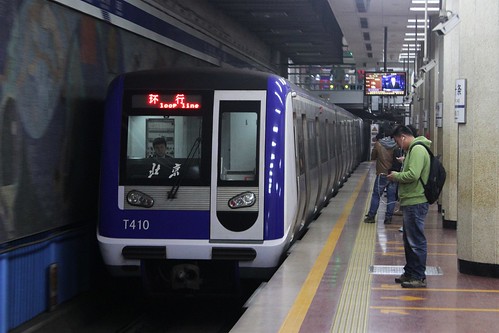


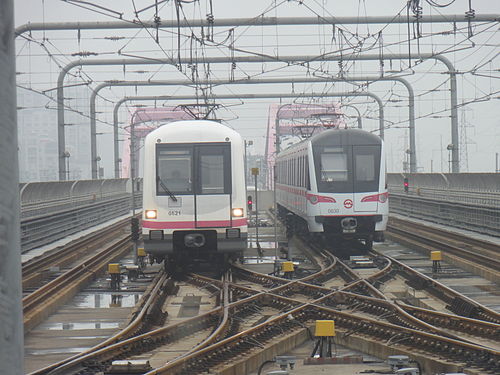
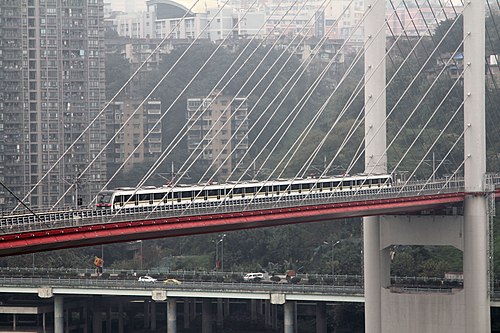

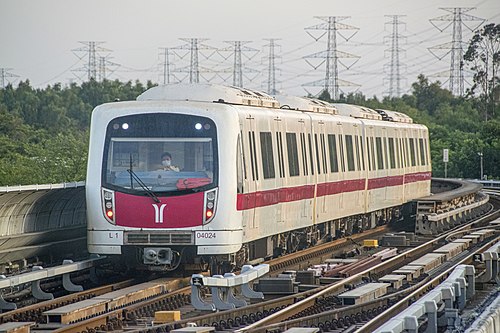
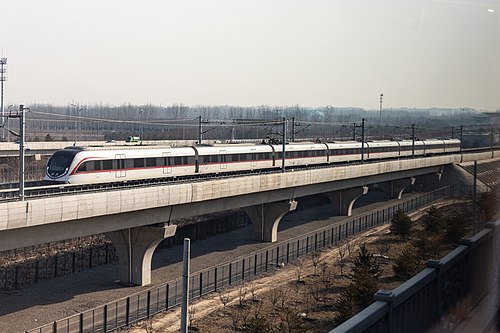
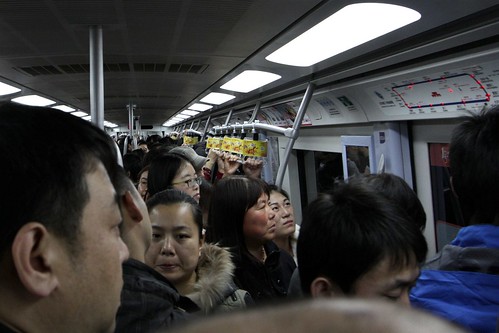

Pingback: Ghost platforms on the Beijing Subway at Dongsishitiao - Checkerboard Hill